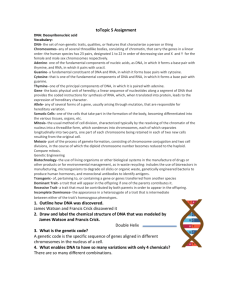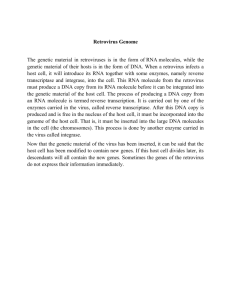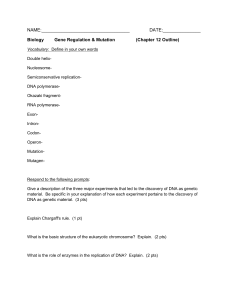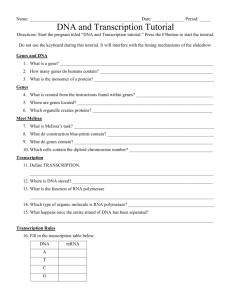Exam II Study Guide
advertisement
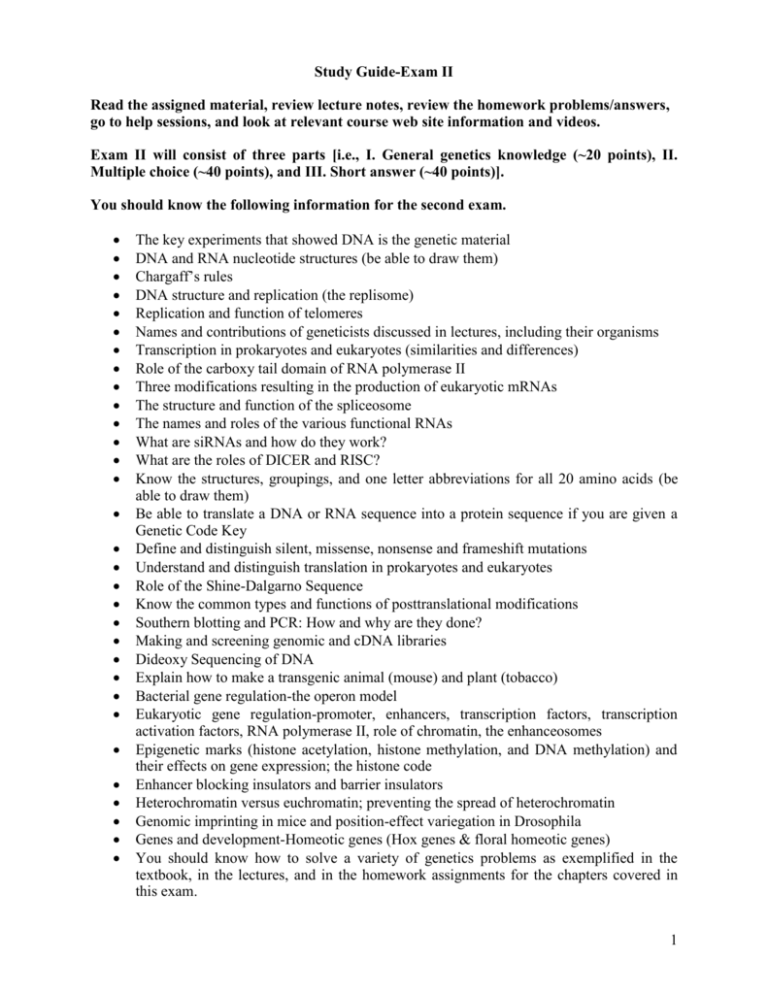
Study Guide-Exam II Read the assigned material, review lecture notes, review the homework problems/answers, go to help sessions, and look at relevant course web site information and videos. Exam II will consist of three parts [i.e., I. General genetics knowledge (~20 points), II. Multiple choice (~40 points), and III. Short answer (~40 points)]. You should know the following information for the second exam. The key experiments that showed DNA is the genetic material DNA and RNA nucleotide structures (be able to draw them) Chargaff’s rules DNA structure and replication (the replisome) Replication and function of telomeres Names and contributions of geneticists discussed in lectures, including their organisms Transcription in prokaryotes and eukaryotes (similarities and differences) Role of the carboxy tail domain of RNA polymerase II Three modifications resulting in the production of eukaryotic mRNAs The structure and function of the spliceosome The names and roles of the various functional RNAs What are siRNAs and how do they work? What are the roles of DICER and RISC? Know the structures, groupings, and one letter abbreviations for all 20 amino acids (be able to draw them) Be able to translate a DNA or RNA sequence into a protein sequence if you are given a Genetic Code Key Define and distinguish silent, missense, nonsense and frameshift mutations Understand and distinguish translation in prokaryotes and eukaryotes Role of the Shine-Dalgarno Sequence Know the common types and functions of posttranslational modifications Southern blotting and PCR: How and why are they done? Making and screening genomic and cDNA libraries Dideoxy Sequencing of DNA Explain how to make a transgenic animal (mouse) and plant (tobacco) Bacterial gene regulation-the operon model Eukaryotic gene regulation-promoter, enhancers, transcription factors, transcription activation factors, RNA polymerase II, role of chromatin, the enhanceosomes Epigenetic marks (histone acetylation, histone methylation, and DNA methylation) and their effects on gene expression; the histone code Enhancer blocking insulators and barrier insulators Heterochromatin versus euchromatin; preventing the spread of heterochromatin Genomic imprinting in mice and position-effect variegation in Drosophila Genes and development-Homeotic genes (Hox genes & floral homeotic genes) You should know how to solve a variety of genetics problems as exemplified in the textbook, in the lectures, and in the homework assignments for the chapters covered in this exam. 1








